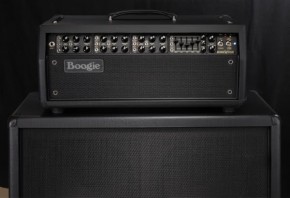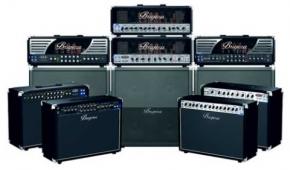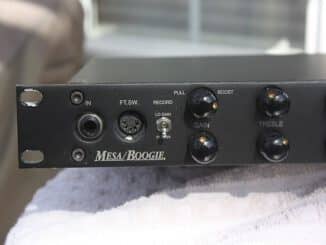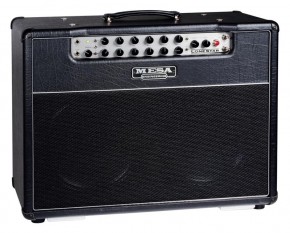 There are a few central debates that continually rage in this thing of ours, topics that never seem to get exhausted during online forum or real time arguing: Gibson vs. Fender, Fender vs. Marshall, Ginger vs. Mary Ann, Bud vs. Miller, and, most importantly, tube amps vs. solid state amps. These are the things guitarists think about. Now, I can’t help you decide to play a Les Paul over a Strat or who to spend your most intimate Gilligan’s Island moments thinking about (though I know where I stand on that particular issue), but what I can do is help you and all my many readers out there in Gear-Vault-land sort out this tube/solid state business. Both sides have their own fans and both sides can be equally passionate about their point of view.
There are a few central debates that continually rage in this thing of ours, topics that never seem to get exhausted during online forum or real time arguing: Gibson vs. Fender, Fender vs. Marshall, Ginger vs. Mary Ann, Bud vs. Miller, and, most importantly, tube amps vs. solid state amps. These are the things guitarists think about. Now, I can’t help you decide to play a Les Paul over a Strat or who to spend your most intimate Gilligan’s Island moments thinking about (though I know where I stand on that particular issue), but what I can do is help you and all my many readers out there in Gear-Vault-land sort out this tube/solid state business. Both sides have their own fans and both sides can be equally passionate about their point of view.
Tube amplifier guys are sort of the guardians of the old ways, insisting that early 20th Century technology is all that ever will be needed to express the sound of an electric guitar. From vintage Fender tweeds to Plexi Marshalls to new boutique tone generators, tube guys love the warm sounds provoked by those glass bottles that launched generations of guitar music, mostly for the lush and often complex overdrive tones that tube amplifiers can deliver. Nothing really sounds like a tube amp for certain things, that’s for sure, but there are also some drawbacks to running this sort of rig: tube amps require regular maintenance and care and feeding, are usually fairly to unbelievably heavy, and, unless you are running a very large and high-powered model, they don’t do the loud and clean thing that well.
Solid state amplifiers, on the other hand, are often great at the same things that tube amps struggle with: they require almost zero upkeep, are usually much lighter, and many excel at getting clean tones at outdoor stage volume levels. Many tube loyalists don’t care for SS-style distortion and, truly, many SS amps’ dirty tones are nothing to crow about, although amps like Tech 21’s Trademark series do a good job of copping tube-like sounds. Some players, like the late Dimebag Darrell, have embraced the sound of non-tube distortion and made it the platform for their tonal identity. Overall, however, fans of solid state amplifiers are usually fans of their amps’ portability and versatility above all else. Modeling amps could also fall under the SS category, although their fans are usually as much into the effect-driven possibilities that modelers provide as they are into the tone of the amp, itself.
So who wins this fight club? That, gentle readers, is purely up to you. The question is not so much tube against non-tube but one of using the right tool for the job at hand. If you need real overdrive, there are nothing like tubes. If you need a versatile and reliable amp that can do loud and clean, you probably need a solid state machine. There really is no reason to fight about it; you can even own both. I do. Both types of amplifiers have their good qualities. It is up to each of us to pump something good through them and let those qualities shine.





So many iconic guitar recordings of the last 40+ years utilize tube amps. In spite of digital modeling technology- which continues to improve- tube amps behave differently, and part of that “behavior” aligns with playing techniques. It’s very organic. But mainly, gear is player driven, so as long as the heroes of aspiring guitar players use tube gear, that’s the gear the market will demand most. Electric guitar music, genres and approaches cover a wide spectrum too. Tubes will probably always be preferred by players of the rootsier genres & styles. Digital tools are in wide use, and have established positions in guitar culture. Solid state & digital technology help facilitate & organize infinite tonal information for guitar players. It’s great for working out ideas quickly, but many will ultimately prefer to finish and polish those ideas through tube/analog gear because that’s the original organic standard.
When I talk about iconic players, of course I’m referring to legends like Hendrix, Clapton, Beck, Page, Townshend, etc. But consider that current virtuosos i.e. Guthrie Govan, Mattias IA Ecklundh, Derek Trucks & Joe Bonamassa use tube amps. Steve Morse has a new ENGL model with his name on it, and Eric Johnson continues to be a hard core analog/tube junkie.
So again, the most current wave of advanced players prefer tubes. These artists drive gear tastes, choices and sales. They may also utilize all sorts of digital & solid state technology in many areas regarding recording & production, but fundamentally they still prefer plugging into tube amplification. Guitar players won’t usually default to the “common sense” of solid state and digital in the face of so many great, hi-profile players continuing to use tubes in spite of reliability & maintenance issues. The world’s greatest guitar players are not always wealthy either. Boutique/vintage tube gear can often be cost & budget prohibitive. But still, this is what the best players prefer, and the reason why there are so many tube amp builders out there able to price point several times over comparably sized solid state/digital amps with dozens of built in bells & whistles.
Now, if any individual guitar player decides that a solid state amp is best for his playing, then kudos to him for his integrity, and double kudos if he sounds great. But trends and statistics among the top players are overwhelmingly stacked on tube gear.
So I really don’t see any close debate between solid state & tubes. The stats show there’s no competition. The market for solid state amps is mainly low budget, entry level players.
No disrespect to any advanced players who don’t use tube amps, even if they can afford to. When such players gain sufficient notoriety in the guitar community as being great players, perhaps their influence will create greater market demand for solid state. That’s how the standard is set. We haven’t automatically switched to solid state for it’s cheaper, lighter, smaller and greater reliability considerations. It’s player driven– and the greatest players have the best ear for which is best. The best players are known as such because a majority of listeners who like they way they sound rank those players as the best. Thus, tubes remain the standard because players and listeners have already voted with their ears. Numbers don’t lie.
End of story.
i for one prefer tube, so it irritates me when i see people play their tube amps on clean with all their overdrive coming from their boss metalzone or like pedal. (that defeats the purpose of using the tube’s overdrive!!) using it as a boost is one thing, but when they stomp their pedal on and it’s suddenly distortion, i get really irritated. they should have just saved themselves the trouble, and just gotten a solid state.
I enjoy listening to, playing on and fixing Tube Amplifiers. If properly set up with high-end components then Tube Amps are, in my estimate, the best. I am intrigued by the many atempts to model the sound of a tube amp. To date, I have probably worked on nearly a hundred amplifiers. The unique thing I have noticed is that while tube amps have general tendencies to sound a particular way, Each amp seems to have developed it own flavor of sound.
I am beginning to formulate the possibility that tube amps develop their own particular sound and that they can be tuned to resonate in a particular chord. I have worked on several Fender Twin Reverbs that sounded the BEST when playing songs in E or A. I can see this being a possibility based on theory BUT I really wonder if it is not just a want-it-to-be, and not based on scientific fact. Anyway, I’m not on drugs just open-minded to out-of-the-box thinking.
Has anyone else noticed this aspect of tube amps?
TIA
Wayne: Those Twins that sound best in the key of A or E, are probably more responsive overall than average. Remember that those keys also happen to be very guitar friendly keys in terms of standard tuning and the amount of open harmonic information. If you tuned down a half step or even a whole step, you may find those amps also like Eb or D or Ab or G just as well.
But you’re still on to something, because cabs have resonance properties, and no two cabs are alike in this respect. Guitars also have resonance properties which can favor certain keys, and this translates through the amp as well. Certain keys sound better in certain rooms, but not in others. Plenty of factors! ;))
I am a all tube user HOWEVER, I give a lot of respect for Randall’s efforts with their hybrid line of amps and really would rather use one of their heads than a all out modeling amp, if those were my only choices. At least Randall did go for the juggler vein with insane amounts of gain and a amp designed for the heaviest of metal possible. Who knows maybe in 10 years this will be refined into the perfect head. I wish I had spent more time checking out the T2 model when it was available. Also my comment has nothing to do with dimebag or whatever Randall equipment he used. Its too slow and too nice for me anyway.
Wow zombie thread 🙂
My favorite amp is a Mesa Boogie 50 Caliber+ tube amp. The one it sits on top of is an old Fender Stage 160, all solid state.
I think any guitar sounds good on the Boogie. I think my Telecaster makes the Fender amp sound better.
Doesn’t really matter what made the sound, it’s what hits your ear that matters.
Tube amp soldiers will happily plug a solid state set of pedals into the input. How pure is that?
It’s what it sounds like to the ear that really matters.